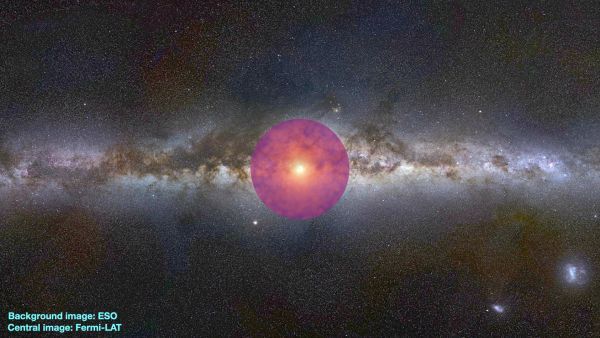Calea Lactee este iar in mijlocul unei descoperiri uimitoare dupa ce oamenii de stiinta au oferit pentru prima oara o explicatie cu privire la motivele din cauza carora centrul galaxiei noastre straluceste. Conform uneo teorii formulate de catre oamenii de stiinta, stralucirea pe care o vedem in centrul galaxiei Calea Lactee ar avea la baza anihilarea materiei negre care s-ar afla acolo, si aceasta este prima oara cand o asemenea informatie este prezentata de catre ei.
Conform teoriei, particule de materie neagra s-ar ciocni intre ele in zona centrala din galaxia Calea Lactee, iar asta ar forma atat particule elementare, cat si raze gamma, care sunt aruncate mai apoi prin galaxie. Sursa de lumina stralucitoare, care poarta denumirea excesul din centrul galactic, a fost descoperita in zona centrala din Calea Lactee in anul 2009, iar pana recent a fost studiata pentru a se descoper ce anume sta la baza existentei sale.
Calea Lactee: Descoperire Majora, de ce Straluceste Centrul

Calea Lactee este vasta, iar regiunea in care se inregistreaza aceste coliziuni dintre particulele de materie neagra este foarte mare, dar chiar si asa, a fost nevoie de peste un deceniu de analiza pentru a se ajunge la aceasta teorie. Conform oamenilor de stiinta, in momentul in care particulele de materie neagra se ciocnesc, ele se dezintegreaza si duc la formarea de electroni si pozitroni, procesul putand fi reprodus inclusiv pe Pamant, nu doar in Calea Lactee.
“Cred că cea mai interesantă constatare este că materia întunecată poate explica excesul de centru galactic. Acest rezultat nu a fost găsit niciodată cu un model în care totul, densitatea materiei întunecate și modelul fizicii particulelor, sunt luate în mod consecvent.”
Desigur ca aceasta teorie este sustinuta de catre unii oameni de stiinta, in timp ce altii nu sunt de acord cu ea, si spun ca de fapt stralucirea din acea zona a galaxiei Calea Lactee ar avea alte surse. Vorbim despre ceea ce ei numesc pulsari la milisecunda, sau alte tipuri de stele, deci nimeni nu stie 100% sigur ce anume se intampla acolo, insa teoriile vor continua sa apara in lipsa unor date 100% clare cu privire la acea regiune din Calea Lactee.
Calea Lactee este monitorizata de la distanta de catre cercetatori, iar asta pentru ca prea aproape de centrul galaxiei nu a reusit sa ajunga cineva, si mai mult ca sigur nici nu va ajunge, avand in vedere cat de departe este.






















